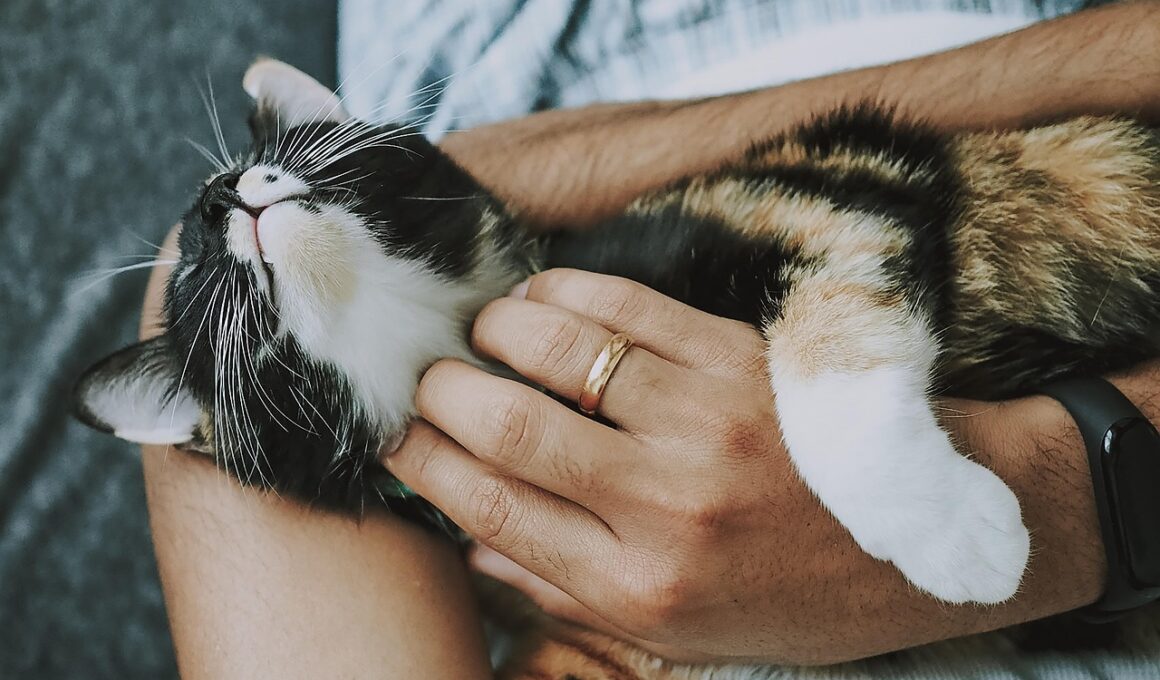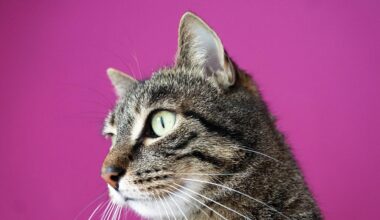Introduction to Virtual Reality in Cat Dental Care
Virtual reality (VR) is rapidly changing how various industries, including veterinary medicine, approach education and training. In cat dental care, VR technology offers immersive solutions that improve dental training as well as treatment procedures. Using VR, veterinary professionals can practice dental surgeries or cleanings in a virtual environment without risk to real cats. This hands-on experience can build confidence and skill before they perform procedures on live patients, leading to better outcomes. Moreover, VR provides consistent training experiences, ensuring that all professionals get the same thorough exposure to the necessary techniques and procedures. The importance of cat dental health is becoming well-recognized, with more veterinary practices incorporating preventive and proactive dental treatments. By utilizing VR, practitioners can simulate various scenarios that they may encounter in real-life situations, allowing them to be better prepared. The transition to using such advanced technologies can help reduce errors and increase the effectiveness of cat dental care. As this trend grows, so will the demand for more specialized training programs, ultimately benefiting feline patients while enhancing the veterinary profession’s skill set.
Advantages of VR Training in Veterinary Dentistry
One of the primary advantages of implementing VR technology in cat dental care training is its ability to replicate real-life scenarios without the associated risks. For instance, new veterinarians can practice critical dental procedures like tooth extractions, cleanings, and identifying dental diseases in a controlled, virtual environment. This exposure enhances their learning and promotes skill retention, leading to greater confidence when managing actual cases in practice. Another significant advantage is the ability to track progress and analyze performance through comprehensive data sets within the VR training systems. Supervisors can assess individual progress and identify areas where improvement is needed. Moreover, training can be tailored to meet specific needs, catering to professionals at different levels of expertise. The collective knowledge gained through VR training can also promote teamwork as different professionals collaborate in shared virtual environments. As the field of veterinary medicine evolves, utilizing advanced technology like VR can help bridge educational gaps, ensuring that veterinarians are well-equipped to handle complex dental issues in felines, resulting in improved patient care and outcomes.
As technology advances, incorporating virtual reality into cat dental care is becoming essential not only in training but in treatment as well. VR can help practitioners perform complicated dental procedures by offering detailed simulations that highlight anatomical structures much like they are observed in real-life. This visual aspect enhances the understanding of the feline dental system, helping veterinarians prepare before actual surgeries. Additionally, by using VR, veterinarians can communicate effectively with pet owners who might find it challenging to understand dental issues. The ability to discuss treatment plans while visualizing the condition through VR can foster better communication and trust between the veterinarian and pet owner. Moreover, treatment plans can be customized based on the cat’s unique dental needs, and veterinarians can even simulate the expected outcomes of procedures through these immersive experiences. This technology can also ease the fears of anxious pet owners by providing them a clearer picture of the procedures their cats will undergo. Overall, integrating VR in both training and treatment ensures a more informed and involved approach to cat dental health, fostering a positive experience for cats and their owners alike.
Future Prospects of VR in Cat Veterinary Practices
The future prospects of virtual reality in cat dental care promise significant advancements in veterinary practices. As VR technology becomes more affordable and accessible, we can expect wider adoption among veterinary schools and clinics. This expansion will enhance the quality of education provided to aspiring veterinarians regarding feline dental care, preparing them to tackle real-world challenges effectively. Furthermore, as research continues to highlight the benefits of VR in surgical simulations, it will likely influence the curriculum in veterinary education. The collaboration between veterinary technology developers and educational institutions is essential to create tailored VR programs that meet specific learning objectives. Additionally, the growing awareness of the importance of dental health in cats will drive demand for well-trained professionals who can provide high-quality care. As a result, more veterinary practices may implement VR systems to enhance their training protocols and client relations. This will lead to a paradigm shift in how feline dental care is managed alongside technological innovations, ensuring that veterinarians remain at the forefront of modern veterinary practice, ultimately benefiting cat health and wellness.
It is essential to consider the ethical implications of using virtual reality in veterinary dental care. While VR provides many learning opportunities, it also raises concerns regarding accuracy in simulations. Developers must ensure that VR environments replicate real-life scenarios faithfully to prepare veterinary professionals effectively. Moreover, continuous updates and improvements in VR technologies are crucial to maintain their relevance and effectiveness in training. Professionals must remain aware of the distinction between virtual training and hands-on experience; both are necessary to gain a comprehensive understanding of feline dental care. Balancing between VR training and real-life experiences will provide a well-rounded education for veterinarians. Furthermore, VR systems may also serve as educational tools for cat owners, helping them understand and maintain their pets’ dental health. Ensuring proper feline dental care can extend a cat’s lifespan and enhance its quality of life. In this light, VR can serve both as a training aid for professionals and as a public education tool, fostering better pet health outcomes. This dual approach exemplifies the potential impact of technology in modern veterinary practice, progressing towards enhanced cat dental care.
Integrating VR with Advanced Technologies in Veterinary Medicine
As we look towards the future, integrating virtual reality with other advanced technologies, such as artificial intelligence and telemedicine, can revolutionize cat dental care. AI can provide valuable support in diagnosing dental diseases by analyzing images and suggesting treatment plans. Combining AI with VR could offer a comprehensive training tool that allows veterinary professionals to practice diagnosis and treatment in simulated environments while benefitting from AI insights. Additionally, integrating telemedicine can improve client consultations, enabling veterinarians to share VR simulations with clients remotely. This capability allows for collaborative discussions regarding the cat’s dental health in real-time, fostering greater transparency and understanding. Such integrations will not only enhance education and training but will also improve clinical outcomes, as practitioners become more proficient in managing dental health. The convenience provided by telemedicine will ensure fewer barriers to quality care, ultimately benefiting cats in need. As veterinary practices embrace these technologies, improved avenues for education, treatment, and communication will emerge, enhancing the overall quality of care for feline patients and promoting better health outcomes.
In conclusion, the adoption of virtual reality in cat dental care signifies an exciting frontier in veterinary medicine. As we embrace these technologies, it is crucial to remain grounded in the fundamentals of veterinary practice while leveraging innovations that enhance care. Continuous learning and adaptation will be necessary for professionals to thrive in this evolving landscape, ensuring the highest standards of care for feline patients. Additionally, ongoing research will be essential to validate the effectiveness of VR applications in improving educational and clinical outcomes. Veterinary professionals should approach these advancements with a mindset focused on ethical practice and responsibility. By maintaining a balance of cutting-edge technology and traditional veterinary knowledge, the profession can evolve in ways that benefit both practitioners and feline patients alike. Cat owners should also play an active role in understanding and utilizing available veterinary resources to ensure their pet’s oral health is prioritized. As VR technology advances, the veterinary community’s commitment to integrating these innovations ethically and responsibly will pave the way for a future of informed, empowered, and healthier feline lives.
This ending segment emphasizes the collaboration and partnership between technology developers, educational institutions, and veterinary professionals in advancing the field of cat dental care. Enhanced training methods, patient engagement, and improved communication will result directly from the integration of VR in veterinary practices, offering better outcomes for cats globally. By fostering such partnerships, the veterinary community can achieve a collective goal of improving feline oral health and ensuring that each cat receives the care it deserves. The future of veterinary dentistry for cats is bright, and as virtual reality moves further into the mainstream, the possibilities for enhancing animal health and well-being are limitless. With collaborative efforts, shared experiences, and ongoing education, the veterinary profession will continue to elevate standards of care for cats and adapt to the unique challenges faced in feline dental health. Ultimately, this approach will not only create skilled veterinary professionals but also help nurture a culture that values feline health and happiness. By embracing virtual reality as a foundational tool, we can expect significant advancements in cat dental care training, treatment, and overall patient engagement.


